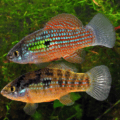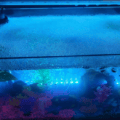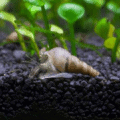Cherry barbs, renowned for their vibrant hues and serene demeanor, grace aquariums with their charm and elegance. For those captivated by these delightful creatures, understanding their size becomes essential in providing optimal care. So join us as we navigate the waters of cherry barb care, ensuring a flourishing and harmonious aquatic habitat for these beloved freshwater inhabitants.
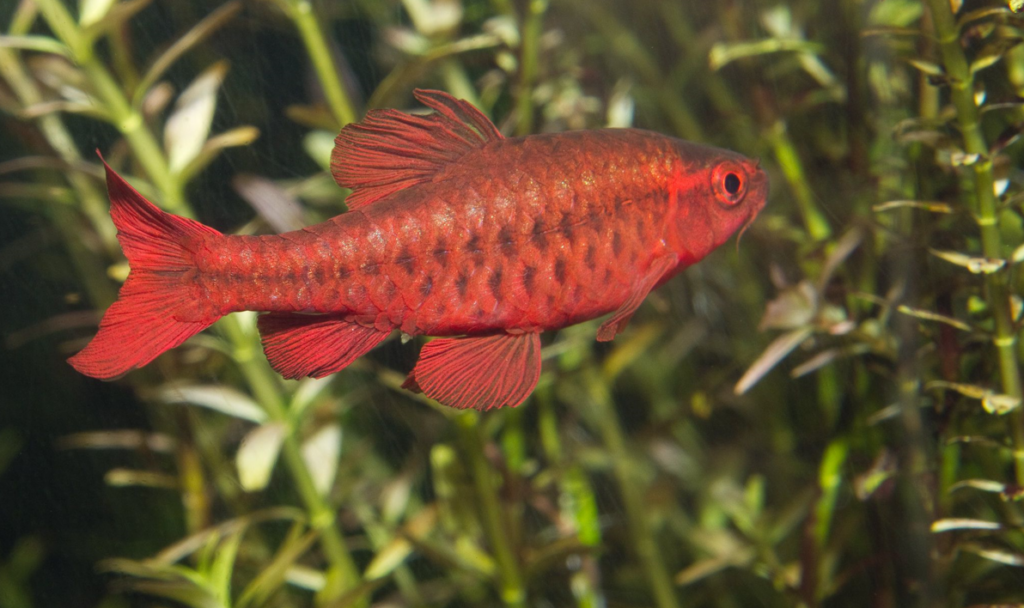
Cherry barbs are a popular choice for aquarium enthusiasts due to their vibrant colors and peaceful nature. One common question that arises when considering cherry barbs as pets is their size. In this article, we will explore the typical size range of cherry barbs and factors that can influence their growth.
Cherry Barb Physical Characteristics
Cherry barbs are small elongated fish with a relatively compressed body structure. On average, they reach a length of about 5 cm (2 in). The females have a fawn-colored upper body with a slight greenish sheen, while their sides and belly display gleaming silver highlights.
Factors Affecting Cherry Barb Size
When it comes to the size of cherry barbs, several factors come into play. Genetics play a significant role in determining the ultimate size of these fish. However, providing them with proper nutrition is also crucial. A balanced diet rich in protein and other essential nutrients can contribute to their optimal growth.
Additionally, the size of the tank and the environment in which cherry barbs are kept can impact their size. A spacious tank allows them to swim freely and exercise, promoting healthy growth. Providing a stress-free environment with appropriate tank mates is equally important.
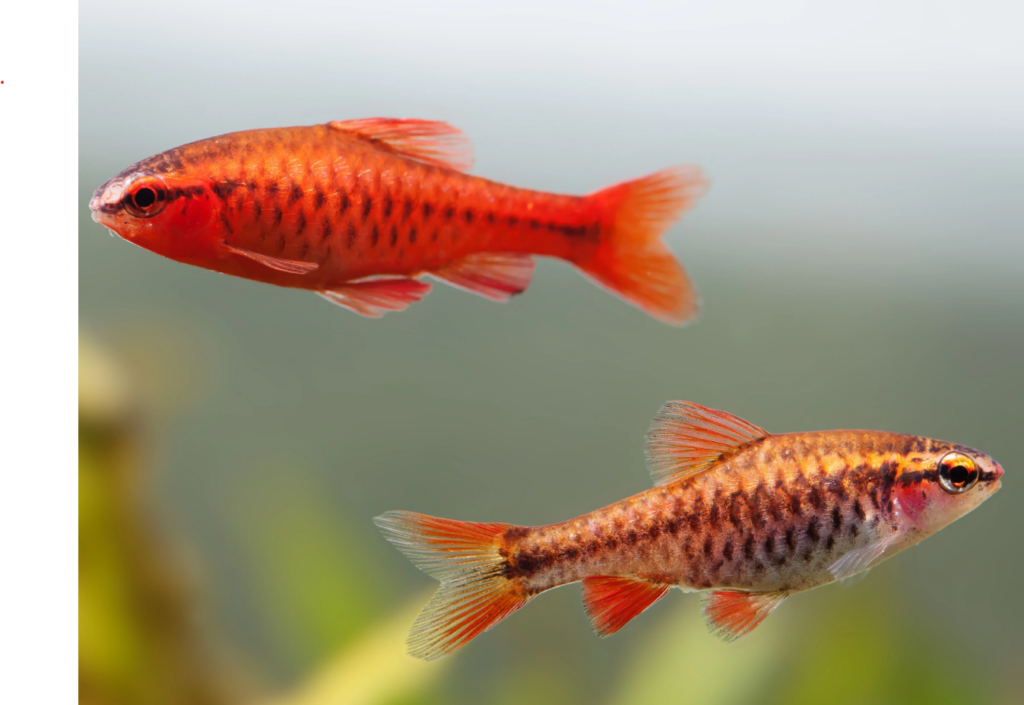
Growth Rate and Development of Cherry Barbs
Cherry barbs, like all fish, go through various growth stages. They start as tiny fry and gradually develop into juveniles before reaching their adult size. The growth rate of cherry barbs can differ depending on various factors, such as genetics, nutrition, and environmental conditions.
Average Size of Adult Cherry Barbs
When cherry barbs reach adulthood, their size becomes more evident. On average, adult cherry barbs measure around 5 cm (2 in) in length. However, it is worth noting that males tend to be slightly larger than females. Males often display more intense colors and longer fins, making them visually striking additions to any aquarium.
Size Considerations for Cherry Barb Tank Setup
When setting up a tank for cherry barbs, it is essential to consider their space requirements. As active swimmers, cherry barbs need ample swimming room. For a small group of these fish, a tank size of about 20 gallons or larger is recommended. Providing enough plants and hiding spots will not only ensure their comfort but also stimulate natural behavior.
Moreover, it is crucial to consider the sizes of other fish when keeping cherry barbs with tank mates. Compatible fish that are similar in size and temperament will reduce the risk of aggression or competition for resources.
Common Misconceptions about Cherry Barbs and Size
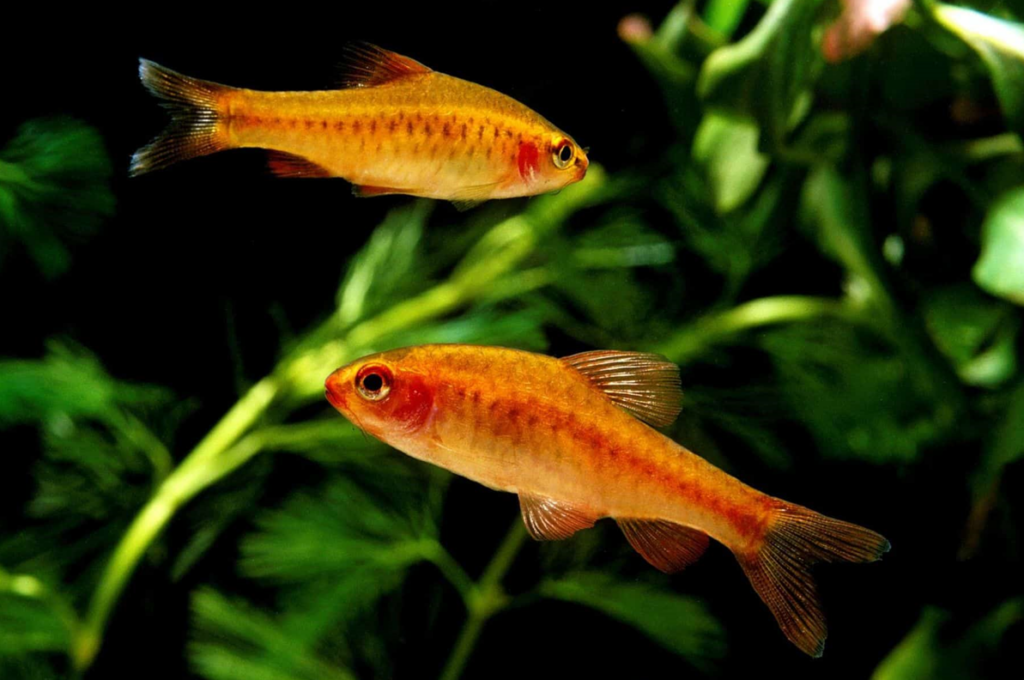
There are a few common misconceptions surrounding the growth and size of cherry barbs. One prevalent myth is that cherry barbs can grow to be much larger than their actual size. In reality, these fish have a natural size limitation and generally do not surpass the 5 cm mark.
Another misconception is related to stunted growth in cherry barbs. Stunted growth occurs when fish are kept in inadequate conditions, such as overcrowded tanks or poor water quality. By providing proper care and meeting their basic needs, such as a suitable environment and nutrition, cherry barbs can reach their full potential size and maintain optimal health.
Tips for Promoting Healthy Growth in Cherry Barbs
If you want to ensure healthy growth for your cherry barbs, consider the following tips:
- Provide a balanced diet that includes high-quality fish food and occasional live or frozen treats.
- Maintain good water quality by regularly performing water changes and monitoring ammonia, nitrite, and nitrate levels.
- Choose an appropriately sized tank and provide sufficient swimming space for active movement.
- Keep tank mates that are compatible in terms of size and temperament.
- Provide hiding spots and vegetation to create a natural and stress-free environment for cherry barbs.
Cherry Barbs Diet

Cherry barbs (Puntius titteya) are popular freshwater fish often found in the aquarium trade due to their vibrant colors and peaceful demeanor, making them suitable for freshwater community tanks. These schooling fish have specific dietary requirements to maintain their health and vibrancy.
In their natural habitat, most cherry barbs eat a variety of foods including insects, larvae, algae, and plant matter. In captivity, they can be fed high-quality flake food as a staple diet, supplemented with frozen foods like bloodworms, brine shrimp, and daphnia.
Male cherry barbs, especially during breeding season, may benefit from an increased intake of protein-rich foods to support their reproductive health. Additionally, providing fresh veggies like blanched spinach or zucchini can offer essential nutrients.
Floating plants can also be included in their tank environment, providing shelter for baby fish and dwarf shrimp while encouraging natural behaviors like free swimming. Overall, a balanced diet consisting of both commercial and natural foods ensures the optimal health and longevity of these delightful freshwater fish.
By providing a balanced diet consisting of high-quality flake food, frozen foods, and fresh veggies, male fish can thrive in freshwater community tanks. Paying attention to their nutritional requirements ensures the vibrant colors and vitality of male cherry barb in aquarium settings.
Final Thoughts
Cherry barbs are fascinating and colorful fish that bring life to any aquarium. While their size may not be large compared to some other fish species, their beauty and peaceful nature make them a delightful addition to any aquatic environment. By understanding and implementing the factors that contribute to their growth, you can ensure that your cherry barbs thrive and reach their full potential.





